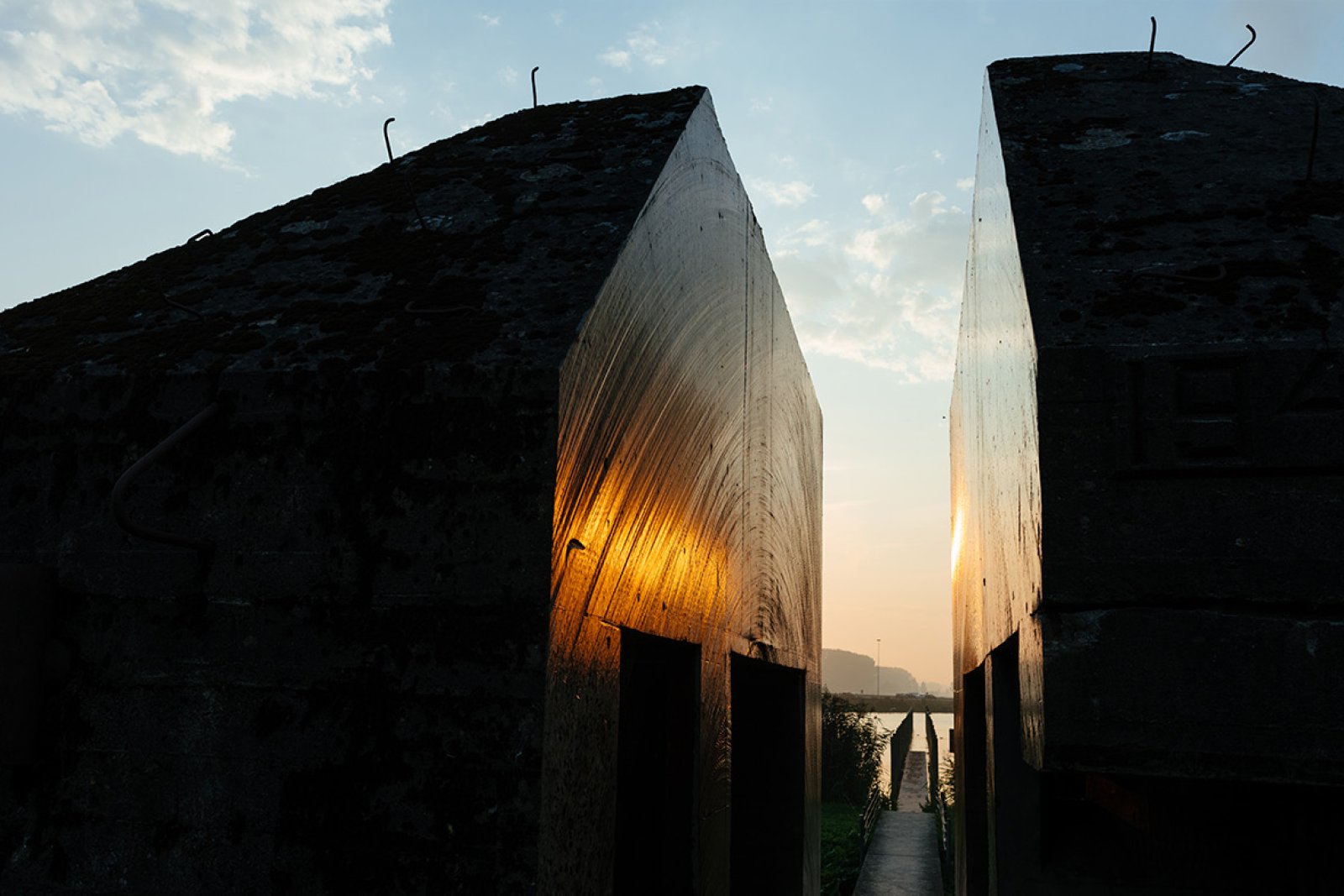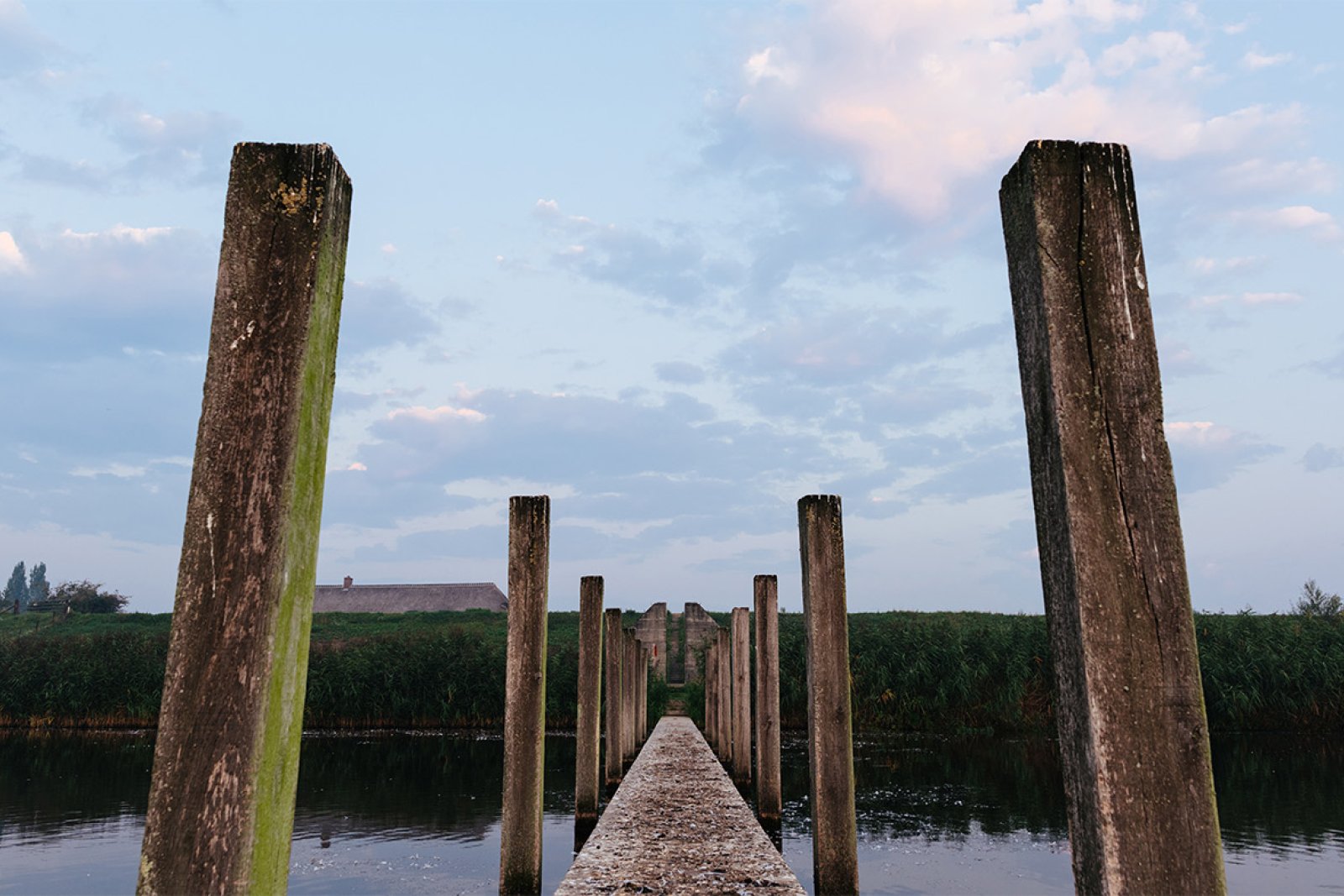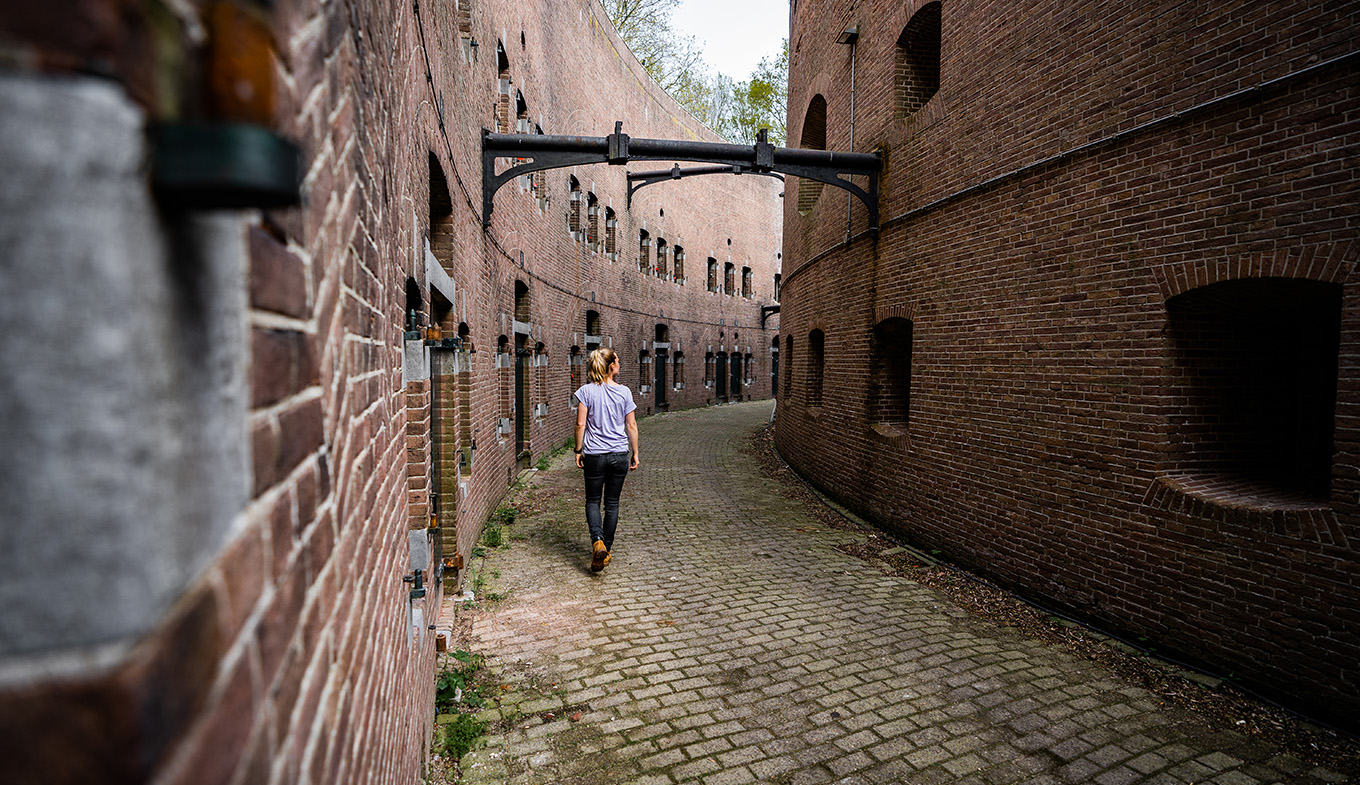
Dutch Water Defence Lines
The Defence Line of Amsterdam was declared a UNESCO World Heritage Site in 1996. In 2021, it was expanded to include the New Dutch Water Line. Together, they form the Dutch Water Defence Lines: a UNESCO World Heritage Site that is all about history. In the past, this ingenious defence mechanism could be flooded to protect against invasion. While it’s no longer used for that purpose, it remains a fascinating place to visit. Immerse yourself in history at one of the forts, enjoy delicious regional produce at the local restaurants or just relax in the historic natural surroundings.
- Pure history in a natural environment.
- Visit the fortified towns, fortresses and castles.
- Cycle or walk through the unique, open landscape.

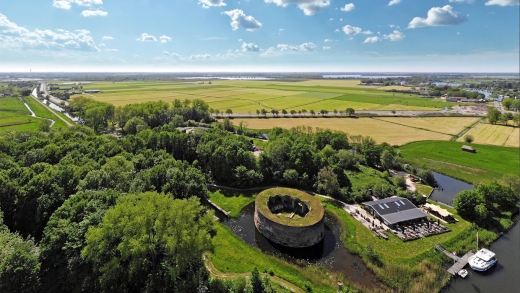
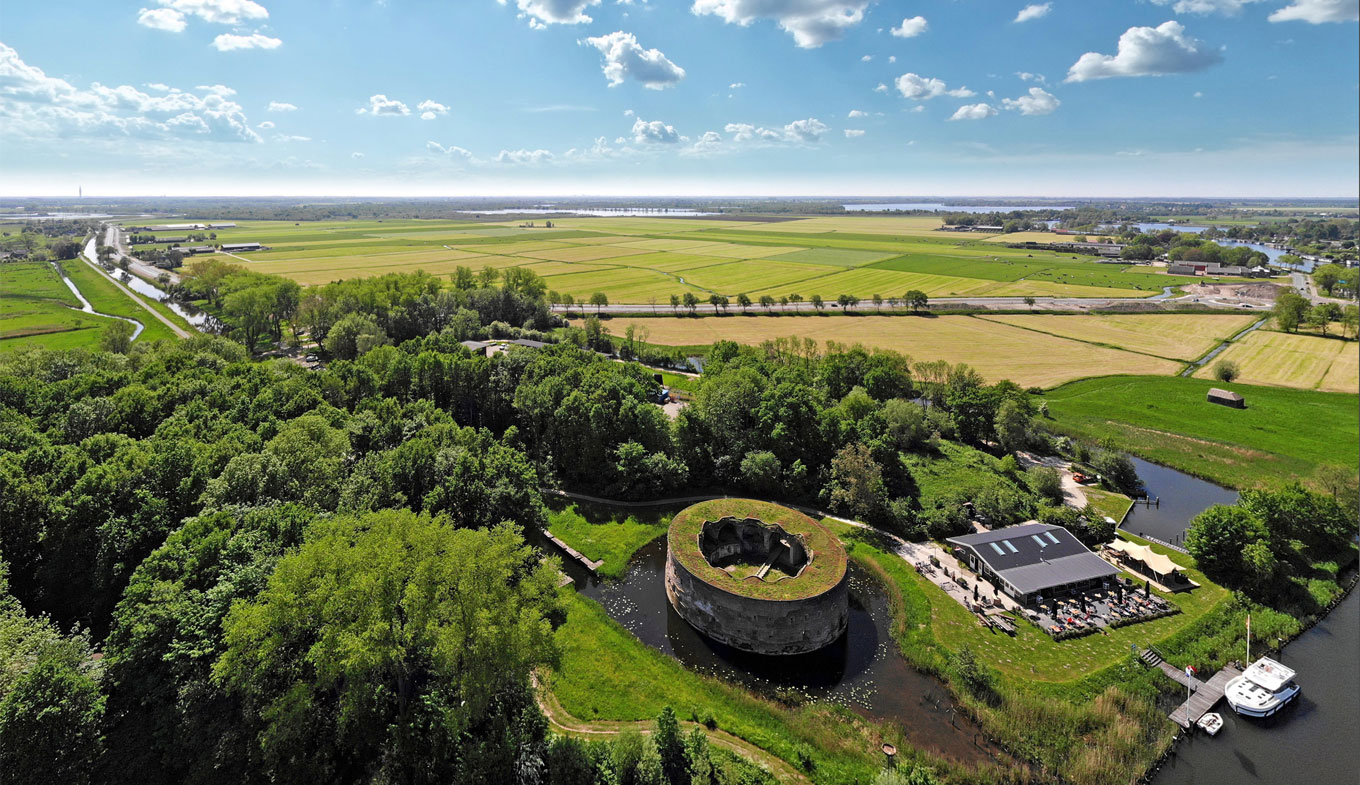
Water as an ally
The defence line runs from Edam all the way around Amsterdam to the city of Muiden and then heads to the Biesbosch National Park. The entire area is more than 200 km long with 96 forts, 6 fortresses, 2 castles, military structures and ingenious waterworks. So there’s plenty to see!
That’s the case now at least. Because the real magic of the Dutch Water Lines is the way they helped defend the country. When under threat of invasion, the sluices were opened and the land was flooded in a process we call 'inundation'.
The flooded defence line was not very deep. The water only came up to about knee height, which is precisely why it was so clever. It was too shallow for boats and other types of floating transport but too deep for horses, vehicles, and soldiers to cross with any kind of speed. The entire defence line was doubly impassable and literally turned water into an ally of the Netherlands.
The real elegance of this ingenious system was that it was almost completely invisible when not in use. If the polders weren’t flooded, it all looked like a normal natural landscape. At most, someone might have spotted a few odd-looking borders or edges, but why would you make anything of that?
A unique combination of landscape, technology and water
The Dutch Water Defence Lines earned their UNESCO World Heritage Site status due to the two historic lines that form a unique combination of landscape, water management and military fortifications. With the Dutch Water Lines, the water became a valuable ally instead of a threat. An elegantly ingenious Dutch invention that cannot be found anywhere else in the world.
Parts of the water lines were inundated several times. The last time it was successfully put into operation was during World War I, as an espionage report from that time shows. In fact, the water line proved so intimidating that the Germans never even tried to invade the Netherlands. By World War II, though, the system had lost much of its effectiveness because the Luftwaffe could simply fly over it.
But the Dutch Water Defence Lines have more to offer than just a unique story. In look and form, they are also perfect examples of the green, open landscapes that characterize the Netherlands. And they are positively peppered with fascinating hydraulic works: water locks, dikes, bunkers, and inundation channels. You could say that the water lines are proof of our bond with the water, without having to dedicate a museum or encyclopedia to the subject.
Visiting the Water Lines
Want to check it out for yourself? Well you’re in luck because there are various options to choose from. You can explore the water lines on foot or by bicycle or opt for something really special such as a guided tour of one of the forts. Or why not visit the Waterliniemuseum in Bunnik? You can even spend the night in a fort or bunker! The Dutch Water Defence Lines offer a large number of accommodation options, ranging from basic to total luxury. Is camping more your speed? Park your RV or pitch your tent next to a fortress moat.
